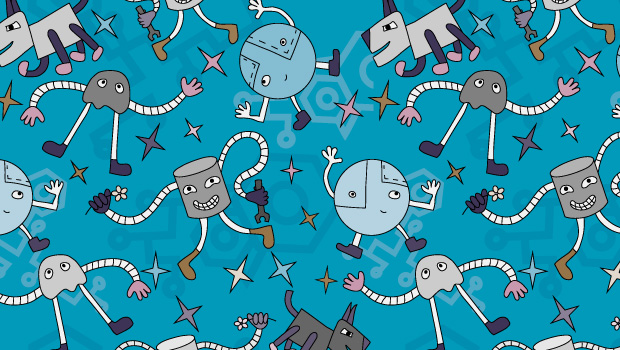Why agencies are embracing automation
If you want something done right, automate it?
We’ve previously highlighted the role Central Desktop plays in helping agencies automate their processes and boost performance. It’s not just agencies jumping on board; a quick glance at Google Trends demonstrates the widespread (and surging) interest in marketing automation:
What’s causing the spike? And why is automation particularly relevant to agencies and marketers?
How automation can help
The biggest benefit of automation is that your team can focus on higher level tasks and spend fewer resources on trivial administrative tasks.
Tools help teams collaborate on content and layout remotely in real-time. Rather than sending emails and other messages back and forth – a surefire productivity killer – a more comprehensive and committed approach to collaboration will reduce all that time spent following up and reaching out. People can just start working – and keep working.
Automation also makes data analysis and data gathering easier – an especially important benefit for those who find this task tedious, especially when done repeatedly and on large amounts of data. Marketers, agencies, and large corporate clients tend to gather so much data that analyzing and cleaning the data often requires hiring more people. But with automation, the software takes care of most of the grunt work. It can even make forecasts on your behalf!
Many organizations are starting to realize these benefits. The adoption of marketing automation alone is expected to increase by 50%. Smaller organizations are also taking advantage of marketing automation, with small to medium businesses in the US projected to spend $2 billion on marketing automation next year.
What can you automate? Almost anything.
There are many tasks that agencies can automate, but first attempts usually center on automating marketing tasks, whether for the agency itself or on behalf of clients. Here are just some of the many common ways to do this:
- Triggered email communications. Leads and prospects can receive marketing and support emails based on actions they take, such as signing up for a mailing list or clicking on a link from a previous email.
- Social media updates. Several brands automate some aspects of their social media marketing, from pre-scheduling posts to auto-following or responding to users. Pretty soon it may even be common for software to start writing your social media updates for you.
- Analytics reporting. Thanks to services like Quill and Wordsmith for Marketing, analytics reporting doesn’t have to mean staring at charts and spreadsheets for hours. You can get a summarized view of your website metrics, all automatically generated in a natural language report.
But it’s not just the marketers in your organization that deal with grueling, repetitive administrative tasks – everyone deals with this. Here are some business processes that are also typically automated:
- Document tracking and processing. Automation can make it easier to search, track, and organize large amounts of documents coming from multiple sources. For example, the Climate & Development Knowledge Network uses an automated tagging tool that makes it easier for people to find and categorize all their documents on clean energy and the climate. We also recently heard about how automation within Central Desktop is helping the marketing team of a health insurance company glide through file collaboration faster than ever.
- Customer support and communication. The automated phone menus and email responses (”We received your message and someone will be in touch in 24 hours”) are just the tip of the iceberg. Apple’s automated customer support system is smart enough to detect frustration, transferring callers to human support agents when they “sense” the caller getting agitated. Call center operators themselves are increasingly becoming assisted – and even replaced – by artificial intelligence.
- Smoother integrations. We can’t always be available to read an email, take a call, check in with our project management apps, or read a text message. In those cases, app integration tools like IFTTT and Zapier help bring all these different platforms together so that you can be aware of important news or project updates even when you can’t directly check in. For example, when an important client sends you an email, an integration service can automatically put a task in your calendar reminding you to reply.
But don’t let the robots run things!
Despite the many benefits of automation, and despite the technology constantly improving, putting too much faith in automation can have serious consequences. As Bill Gates pointed out, “The first rule of any technology used in a business is that automation applied to an efficient operation will magnify the efficiency. The second is that automation applied to an inefficient operation will magnify the inefficiency.”
Earlier this year, the photo service company Shutterfly, sent out a “Congratulations” email intended for new parents – except it was automatically sent to a larger part of their list, whether they were new parents or not. Several brands have also gotten flak for abusing social media automation, such as Bank of America, Progressive Insurance, and the Toronto Maple Leafs.
Get too comfortable with automation and you run the risk of realizing you’ve sent messages to the wrong people, or you’ve accidentally made confidential information publicly available.
The lesson in all these mistakes? Use automation to make things easier, but don’t let it run your marketing or your collaboration for you. That’s your job.







